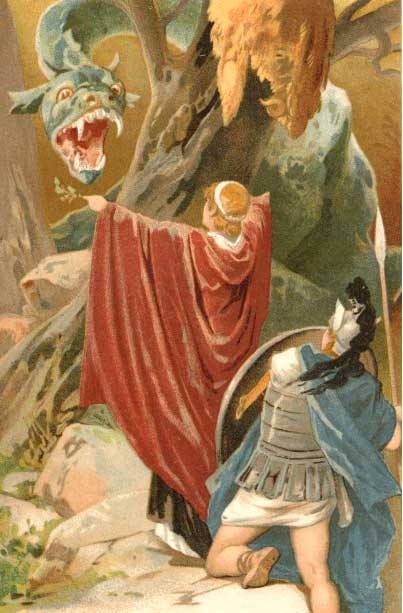
Originally, there was a much larger and an old constellation Agro Navis (The Ship). The three constellations namely Carina, Puppis and Vela that formed a part of it, were separated in 1763 as Carina (The Keel), Puppis (The Stern) and Vela (The Sails). Let us discuss about Carina. Carina is a stellar southern constellation which is a part of the Milky Way. It is now abbreviated and represented as ‘the Keel’. This constellation consists of about 9 primary stars and has about 52 Bayer designated stars. One of the interesting facts about Carina is that it contains a second brightest star in the sky and it once served as a pole star to the navigators living in the northern hemisphere. Carina is a constellation to the Heavenly Waters family and was created by Ptolemy in the 2nd century to fill up the void space. It can be clearly visible in the month of March at 9 pm.
The stars in Carina are:
- Canopus or Alpha Carinae: It is the second brightest star in the night sky and is fainter than Sirius in the constellation Canis Major. It is an F–type bright giant which is about 13,600 times brighter than the Sun and is the most luminous star. It belongs to the Scorpius–Centaurus Association to the solar system. With an apparent visual magnitude of about -0.72, it is approximately 310 light years distant from the earth.
- Eta Carinae or the η Carinae: It is a star system composed of minimum two stars that lie between the light years 7,500–8,000. If the brightness of these two stars should be combined, it will amount to about four million times the luminosity of the sun.
- Miaplacidus or Beta Carinae: It is the second brightest star of this constellation and is also the 29th brightest star in the sky. The traditional name Miaplacidus is a combination of the Arabic word miyāh meaning ‘waters’ and Latin word placidus for placid. The meaning of the star is ‘placid waters’. It has an apparent magnitude of about 1.67 and is approximately 111 light years distant.
- Aspidiske or Iota Carinae; The 68th brightest star in the sky, it is known by various names such as Aspidiske in Greek, Turais in Arabic and Scutulum in Latin. All of these mean ‘shield’. It has an apparent magnitude of about 1.86 and cannot be observed from many locations in the northern hemisphere and is 630 light years away from the earth.
- Theta Carinae; It is a blue–white main sequence dwarf which belongs to the spectral class B0Vp. It lies on the northeastern end of the Diamond Cross. With an apparent magnitude of about 2.74, it is approximately 439 light years distant. It is the most prominent star in IC 2602.
- Upsilon Carinae: This is another double star consisting of a white A–type supergiant and a blue–white B–type giant separated by five arc seconds in the sky. Their apparent magnitudes are 3.01 and 6.26 respectively and lie approximately 1,623 light years distant.
- Omega Carinae: It is a blue–white B–type giant.
Other notable stars in Carina include AG Carinae, PP Carinae, V337 Carinae, V357 Carinae, Chi Carinae, HD 84810 and V382 Carinae.
A few notable deep sky objects include:
- Eta Nebula or the Carina Nebula: It is a large nebula surrounding the massive stars Eta Carinae and HD 93129A and is one of the largest nebulae known. It consists of two smaller nebulae known as the Homunculus Nebula and the Keyhole Nebula. It is about four times the size of the Orion Nebula. It lies far in the southern hemisphere and hence, is not better known. It is between 6,500–10,000 light years distant and has an apparent magnitude of about 1.0.
- Theta Carinae Cluster: It is also known as IC 2602, Caldwell 102 and Southern Pleiades as it resembles an open cluster in the Taurus Constellation. It is clear visible in the night sky. It was discovered by Lacaille in 1751 and contains about 60 stars in total. With an apparent visual magnitude of about 1.9, it is approximately 479 light years distant from the earth.
- Wishing Well Cluster or the NGC 3532: This is an open cluster composing of nearly about 150 stars. It is known as the Wishing Well because if you watch it through a telescope, it appears like silver coins twinkling at the bottom of a wishing well. Composed of 150 stars, it lies about 1,321 light years away from the earth.
- NGC 3603: This open cluster is most frequently used by astronomers to study star formation due to its location in a starburst region.
- NGC 2808: It is another globular star cluster and is one of the biggest clusters in the Milky Way.
- The Diamond Cluster: Also known as NGC 2516 or Caldwell 96, C96, it is an open cluster that can be seen without a telescope on a clear night.
- NGC 3293: It is another open star cluster containing 50 stars that are spread across an area of 10 arc minutes.
Seen at latitudes between +20° and -90°, it lies in the second quadrant of the southern hemisphere.
The constellation of Carina occupies an area of 494 square degrees, making it the 34th largest constellation in the sky. Even though the brightest star of this constellation is 700 light years distant from the earth, it is confirmed that it is 313 light years away from the earth.
Carina does not have any myths associated with it as it was created for scientific reasons. But, there is a myth associated with Argo Navis. It was the name of a ship that was sailed by two men named Jason and the Argonauts in order to salvage the Golden Fleece. According to another story, it is associated with the ship that carried home Menelaus, the King of Sparta after the Trojan War. According to the Egyptians, it is a ship that carried Isis, the most powerful goddess of ancient Egypt and her husband Osiris during a big flood.

Carina is surrounded by constellations such as Centaurus, Chamaeleon, Musca, Pictor, Puppis, Vela and Volans.
G Kowledge of | 0 Comments >>
0 Comments
Leave Comment
Your email address will not be published. Required fields are marked.